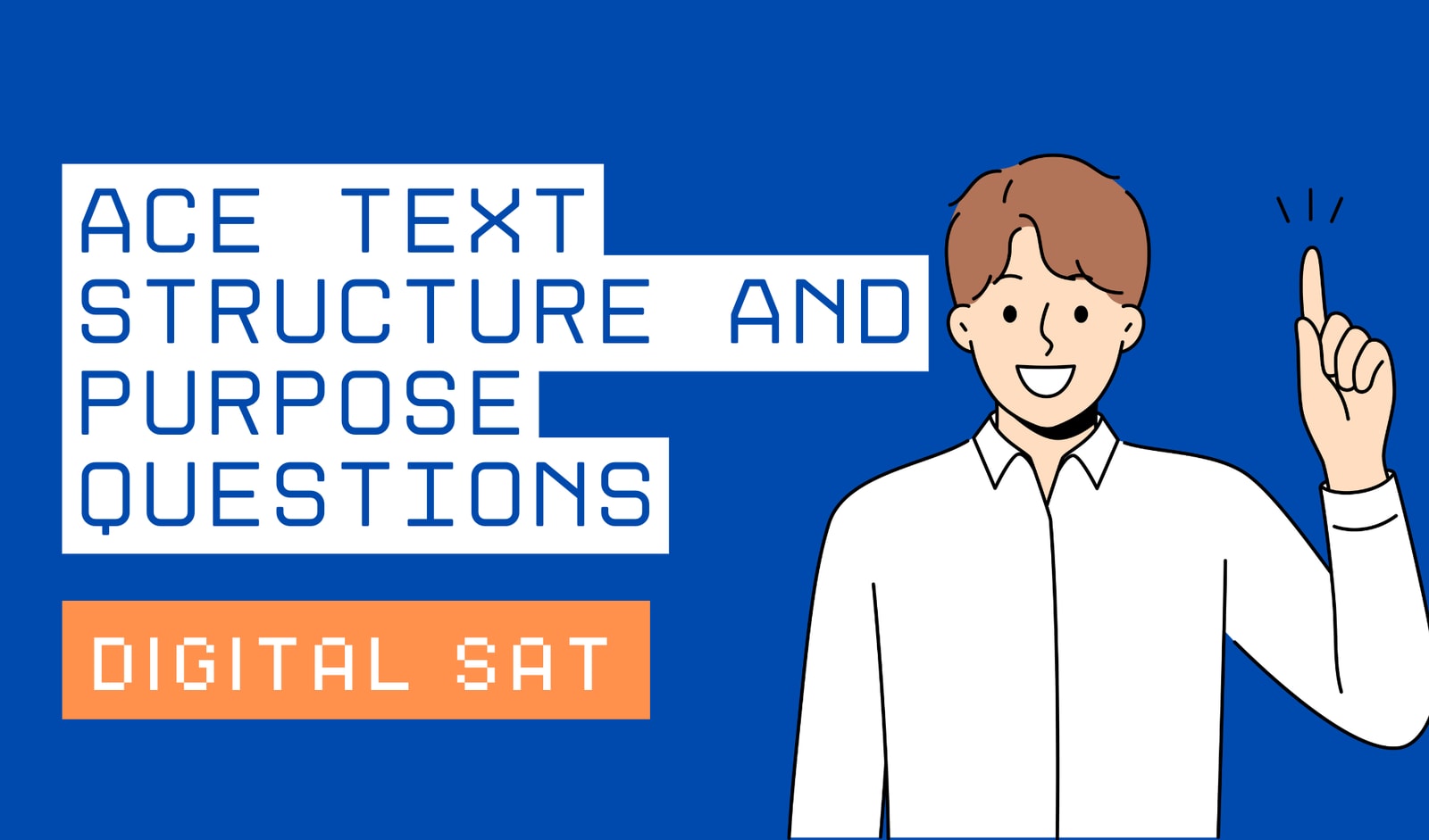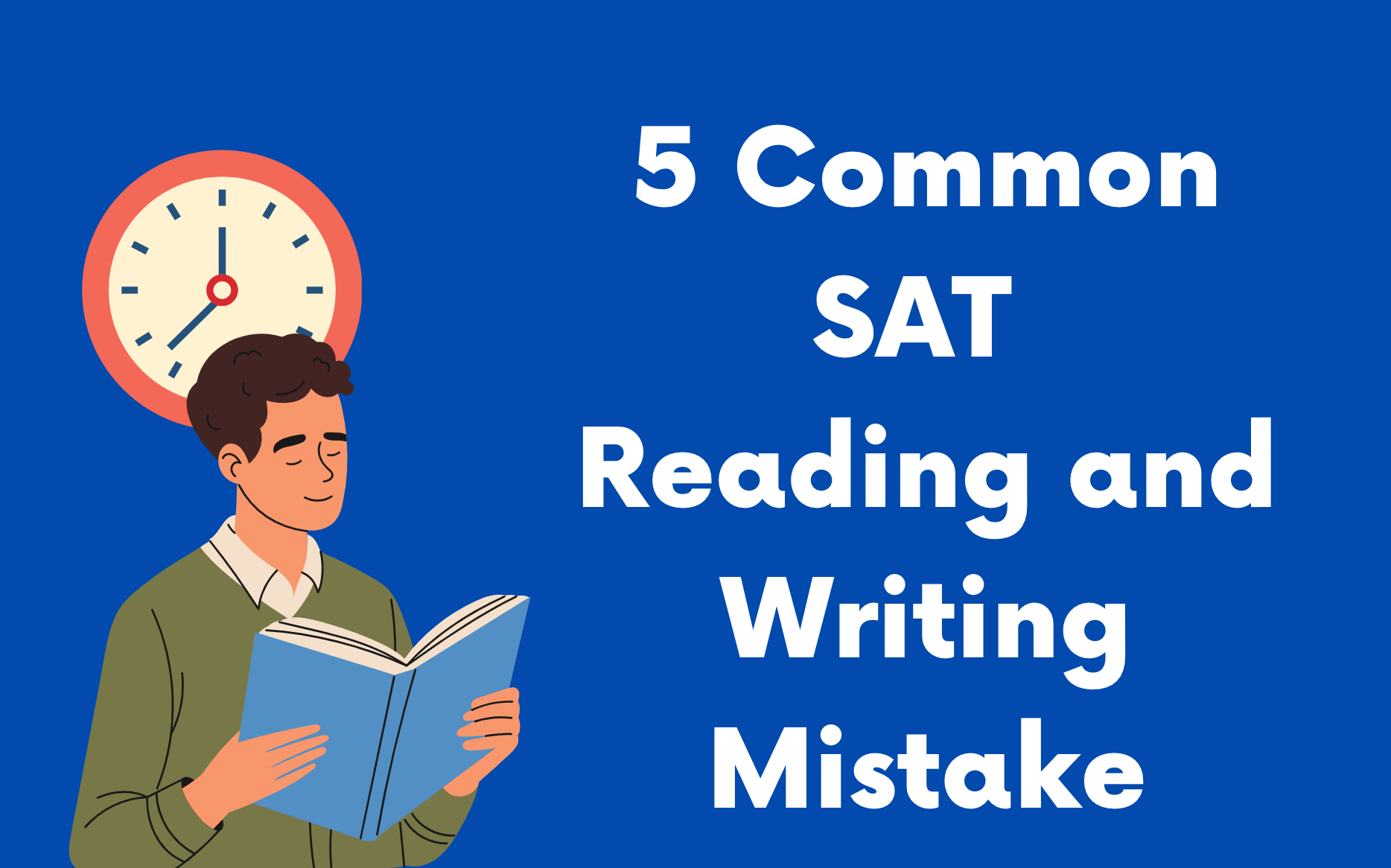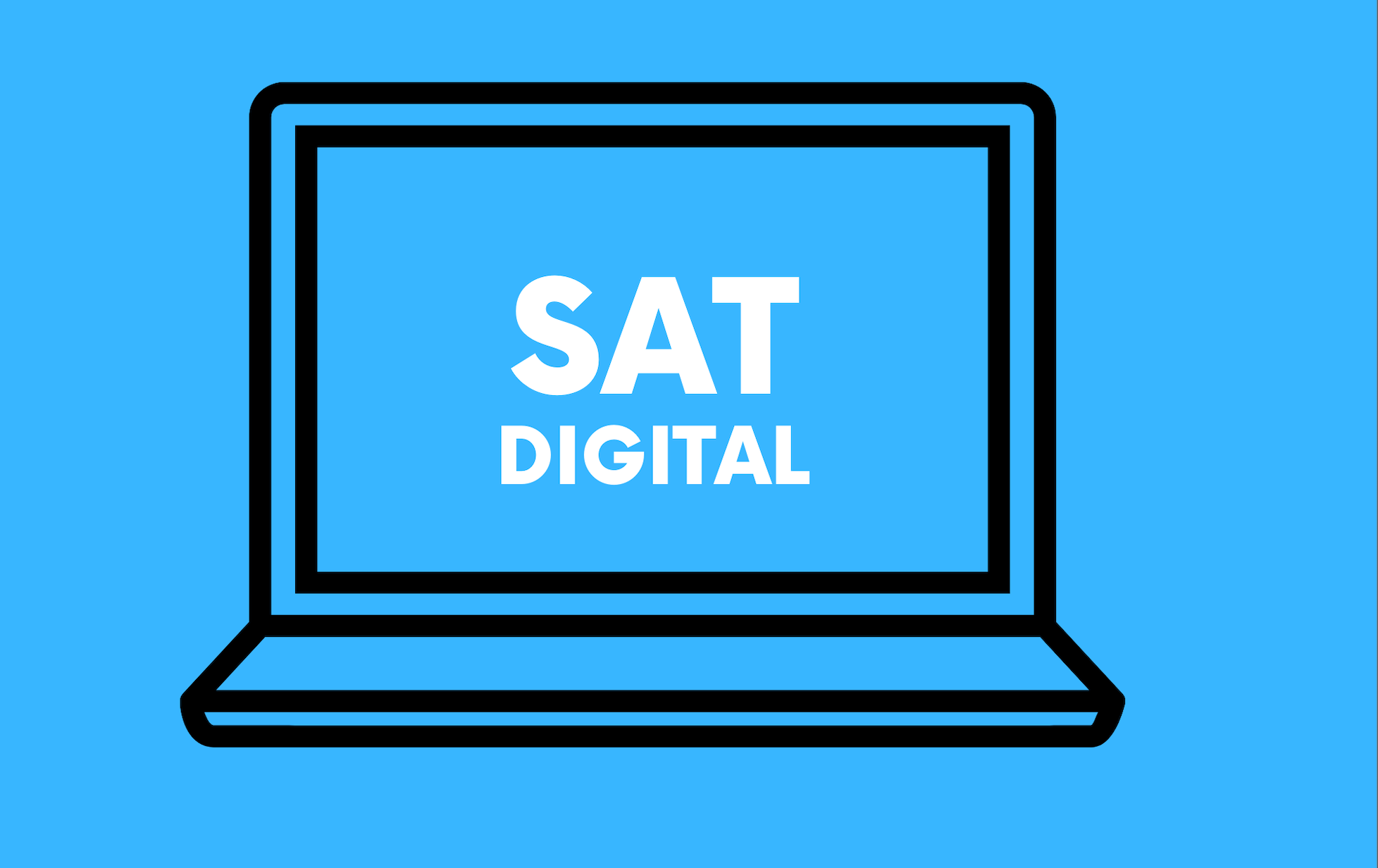Crack the SAT Text Structure and Purpose Questions
Author
Phoenix Wilder
Date Published

Introduction and Overview
"Text Structure and Purpose" questions are an integral part of the Digital SAT Reading and Writing section, designed to assess your ability to analyze how information is organized within a passage and determine why the author presents it that way. This skill is categorized under the "Craft and Structure" domain and accounts for around 7% of the Reading and Writing section (typically 2-5 questions per test).
What makes this question type critical? These questions challenge you to go beyond merely what the text says. Instead, you must consider how it's structured and why the author organized it in a particular way.
What Are "Text Structure and Purpose" Questions?
These questions ask about the organization of a passage and its intended purpose. Instead of focusing on specific content details, they focus on the big picture:
How does the text flow from one idea to the next?
What is the author's main purpose—to explain, describe, argue, persuade, or something else?
Three Key Question Types
1. Main Purpose Questions
• These questions ask: “What is the main purpose of the text?”
• Example: Does the author aim to inform, argue, contrast, or illustrate a concept?
2. Main Structure Questions
• These questions ask: “How is the text organized?”
• Example: Does the passage follow a chronological structure, a problem/solution approach, or a cause-and-effect sequence?
3. Function of a Specific Portion Questions
• These questions ask: “What is the purpose of an underlined portion of the text?”
• Example: Does a particular part support an argument, offer an example, or counter a claim?
How to Think About "Purpose"?
Defining Purpose
The author’s purpose is why they wrote the text. It’s their intention in presenting the information. Common purposes include:
• To explain a complex idea.
• To argue for or against a position.
• To inform the reader about a topic.
• To describe an observation or experience.
• To analyze or evaluate evidence or ideas.
Techniques to Uncover Purpose
1. Look for Active Verbs
• Words like "criticize," "support," or "analyze" give direct clues about the intended purpose.
2. Identify Key Takeaways
• After reading, reflect on the main points that stand out. This often reveals the author’s intent.
3. Consider the Audience
• Why did the author use this tone, structure, or level of detail? Reflect on how they aim to influence the reader.
4. Ask "So What?"
• What is the main message the author wants the reader to walk away with?
5. Check for Patterns
• Look at sections of the text and assess how they contribute to the overall message.
How to Think About "Structure"?
Defining Structure
Structure refers to how the passage is organized—the way ideas connect and flow. Understanding structure allows you to identify relationships between ideas, whether through comparison, chronology, or cause-and-effect.
Techniques to Analyze Structure
1. Identify Organizational Patterns
• Listen for transition words like “however” (indicating contrast), “therefore” (indicating cause and effect), or “first” and “then” (suggesting sequence).
2. Map Out Relationships
• For example:
Does one idea lead to another?
Are arguments presented and then refuted?
3. Look for Emphasis and Key Transitions
Words like “For instance” suggest examples, while phrases like “On the other hand” signal opposing views.
4. Analyze Structure in Relation to Purpose
A passage structured as “Introduction → Evidence → Solutions” might aim to persuade or analyze a topic.
Sample Example of Structure:
• Introduction: Presents the problem of rising pollution.
• Middle Paragraphs: Summarizes research on health effects and explores comparisons to • previous generations.
• Conclusion: Suggests strategies for reducing emissions.
Worksheet: Bringing It All Together
Let’s test your understanding by analyzing questions on both purpose and structure!
Example 1
Passage:
"In the years following the revolution, the nation struggled to establish a stable government amid factionalism. Leaders faced significant hurdles, from mistrust among allies to deeply entrenched divisions that slowed reforms and hindered collaboration."
Question: What is the purpose of the text?
A) To analyze the successes of post-revolutionary government reforms.
B) To explain the challenges of achieving national unity after the revolution.
C) To argue for the need for stricter reforms in governance.
D) To criticize the revolution for creating instability.
Answer: B
The passage emphasizes the difficulties following the revolution, emphasizing themes like "mistrust" and "divisions," making B the correct choice.
Example 2
Passage:
"The author begins by outlining evidence suggesting coral reef bleaching is accelerating. The middle portion contrasts different theories about what causes the phenomenon, while the conclusion offers a compelling argument for stricter climate policies."
Question: What is the structure of the text?
A) Problem → Analysis → Solution.
B) Narrative with Historical Context.
C) Description → Scientific Evidence → Call to Action.
D) Chronological Sequence of Events.
Answer: A
The text starts with the problem (coral bleaching), provides analysis (contrasting theories), and ends with a potential solution (policy advocacy).
Step-by-Step Approach to Answering Questions
Step 1: Identify the Task
Before reading the passage, check whether the question asks for the:
• Purpose of the text (why the author wrote it).
• Structure of the text (how it is organized).
• Function of a specific portion (why a detail is included).
Step 2: Read and Summarize
Summarize the passage in a sentence or two. This will help you stay focused on its main ideas.
Step 3: Evaluate Answer Choices
For Purpose Questions: Eliminate choices that are too vague or misrepresent the author’s intent.
For Structure Questions: Look for answer choices that match the logical flow of the text.
Top Tips for Success
1. Eliminate Distractors
• Wrong answers often:
- Focus on minor details.
- Add extra information.
- Misrepresent the author’s intent.
2. Use Transition Words as Clues
• Pay attention to words like “however,” “therefore,” or “for example,” which suggest shifts in argument or structure.
3. Be Precise
• Choose answers that reflect both the purpose and logical structure of the entire passage.
Realistic Practice Questions
Sample Question 1
Passage: "Some weeds, like dandelions and plantains, are surprisingly edible. They contain more nutrients than many common vegetables, making them a valuable resource for food."
What is the purpose of the passage?
A) To argue for eating more vegetables.
B) To suggest a creative solution for dealing with weeds.
C) To highlight the benefits of common vegetables.
D) To discuss the nutritional value of all plants.
Answer: B
The passage presents the unique idea of eating weeds instead of treating them as a nuisance.
Checklist for Mastery
✔ Understand the 3 question types: Purpose, Structure, and Function.
✔ Use active reading strategies (summarizing, noting transitions, identifying key ideas).
✔ Avoid common traps, such as misrepresented details or overly broad options.
✔ Continuously practice and refine your approach to achieve consistency and accuracy.
By sharpening your understanding of Text Structure and Purpose, you’ll develop the confidence needed to tackle even the most challenging questions on the Digital SAT.
Related Posts

Struggling with the Digital SAT Reading & Writing section? Discover 5 common mistakes students make and actionable tips to boost your score!

Get all the details on the Digital SAT Test—adaptive testing, built-in tools, shorter format, and why it’s more student-friendly than ever!